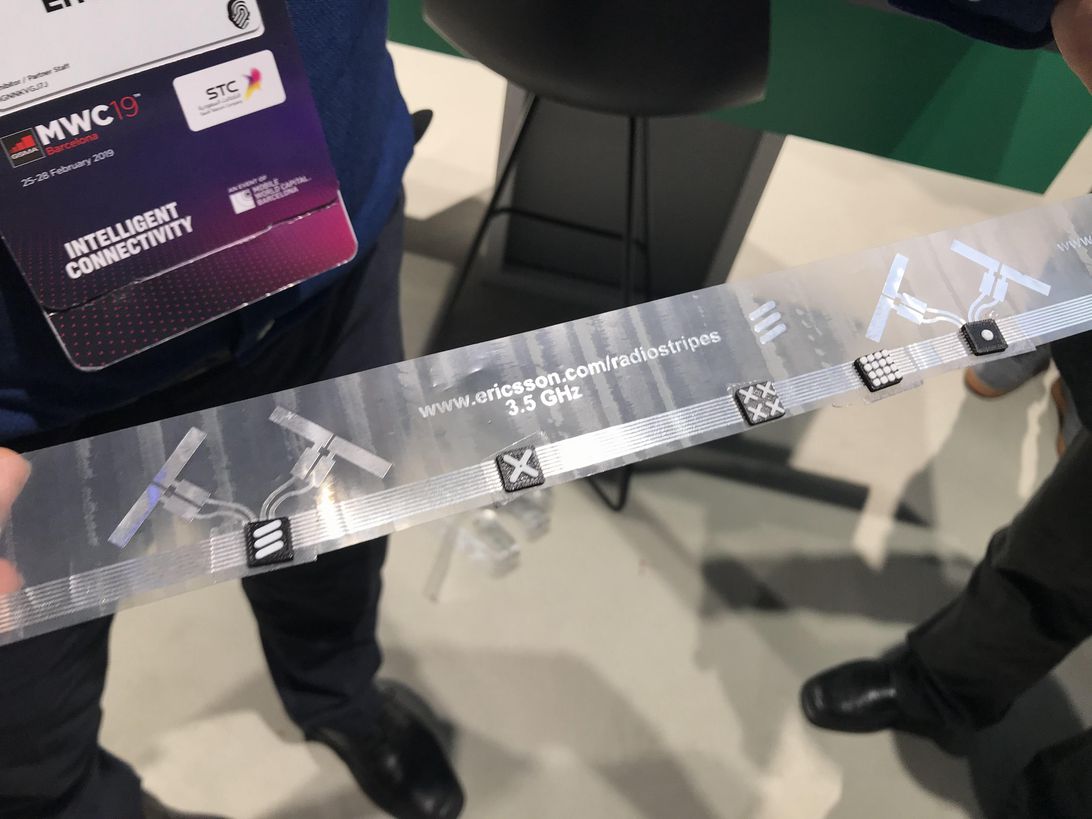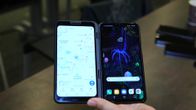
This plastic strip contains small plastic circuit boards and antennas for 5G signals.
Roger Cheng / CNET
Yes, 5G will change your life. But first, it really needs to reach you.
Although 5G networks are starting to work, implementations remain limited. This is because many of the operators, including Verizon and AT&T, employ super-high frequency air waves through something called a millimeter wave spectrum, which offers a thick data channel for incredible speeds but has a limited range. Another of its major problems is the inability to cross the walls, even a sheet could, in theory, interrupt the service.
And this is just where a seemingly innocuous plastic strip comes in that we saw at the stand of the Mobile World Congress of Ericsson, the Swedish provider of telecommunications equipment. The strip contains printed circuit boards and small antennas capable of collecting and sending 5G data. Along the walls in one of Ericsson's demonstrations, the strip was embedded behind a thin piece of wallpaper or hidden by a thin plastic shell. Another strip was placed under a long rolled carpet.

Watch this:
LG V50: A cell phone that comes with a surprise
1:32
"This is how easy it is to deploy the network," said Pal Frenger, an Ericsson researcher, when he placed the roll on the ground and kicked it open. He liked his joke so much that he would tell it again a few minutes later.
This small strip or strip of plastic could have great implications on how 5G could be implemented. Operators are still struggling with how to deal with the limitations of the millimeter wave spectrum, which is why many choose to use a lower frequency spectrum (slower, but wider). The huge number of small cells (miniature cell towers) required to create a network is another obstacle.
So easy to implement 5G.
Roger Cheng / CNET
AT&T technology director Andre Fuetsch, in an interview with CNET also during the MWC, referred to his 5G implementations as "small pockets (pockets) ".
But the ease with which you can hang (or extend) these strips, or even temporarily install them in an outdoor location, can boost 5G deployment by offering better coverage in small corners. By offering a simpler and simpler method to connect antennas that are compatible with the millimeter wave spectrum, the strip will allow users to obtain the maximum benefit of 5G.
It is still just a prototype
The technology sounds incredible, but it is likely that it will take several years before it becomes a reality. The prototype is the work of the Ericsson research and development team that was responsible for discovering innovative approaches to 5G network technology. It still doesn't work, and those little antennas on the strip are fake.
A spokesman said it is likely that the team has not analyzed aspects such as the security implications of transmitting these signals anywhere. At this point, it remains to be found out if Ericsson could do it.
In theory, the plastic strip can be inserted under a mat or carpet.
Roger Cheng / CNET
But the strip managed to attract the interest of many telecommunications executives who went through ah. I saw the executives of China Mobile surprised by the technology.
Meanwhile, the Ericsson executive, proud of his chistorete, said again:
"Easy to be the deployment of your network …"
